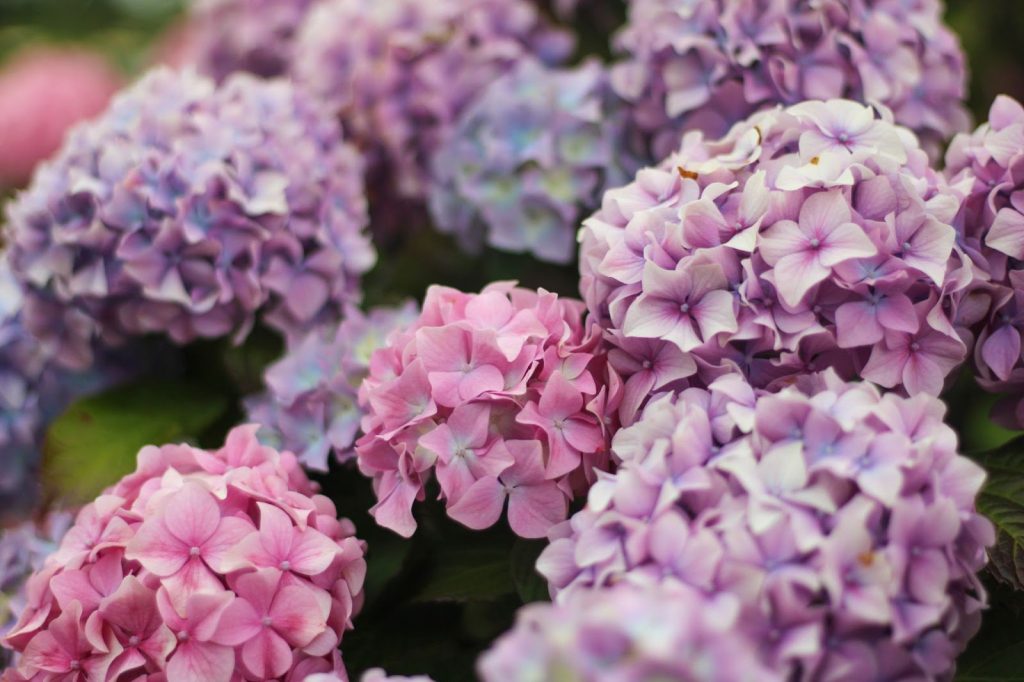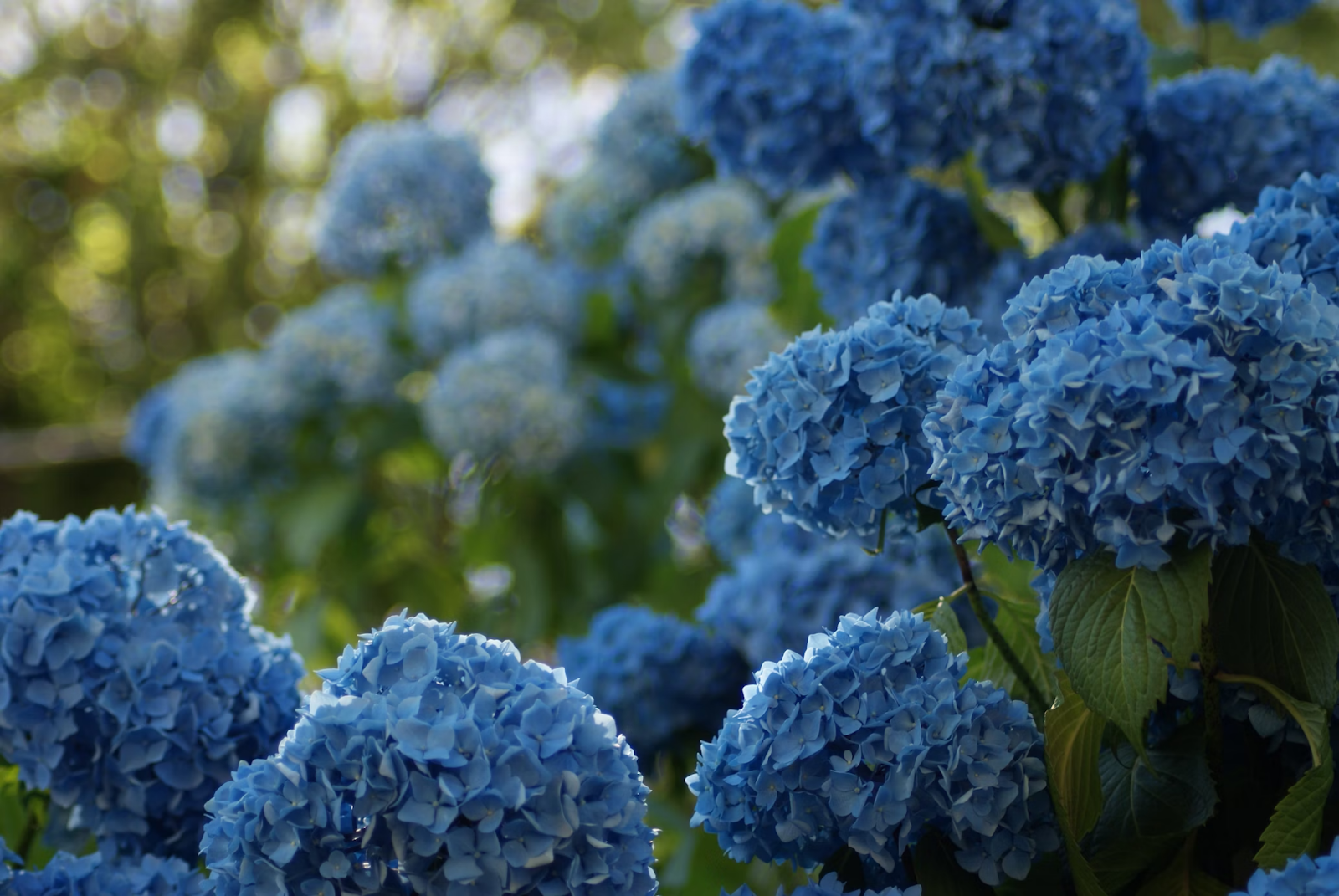If you’re looking to add a splash of color to your garden, hydrangeas are a great choice! These beautiful flowering shrubs can brighten up any landscape. And the best part? Planting them is easier than you think!
In this article, we’ll take you through the step-by-step process of planting hydrangeas. From preparing the soil to giving them proper care throughout the year, we’ll show you everything you need to know.
So grab your gardening tools, and let’s get started!
Key Takeaways:
- Soil quality is critical for hydrangea success. The soil needs to be nutrient-rich, well-draining, and with a balanced pH level. You can adjust the pH level to influence the color of the blossoms.
- Hydration plays a key role in hydrangea growth. They should be watered three times a week in their first year and should have a root ball positioned slightly above the soil surface to prevent water pooling.
- Location and spacing are vital for optimal growth. Hydrangeas need spots with full morning sun and afternoon shade. Depending on the variety, hydrangeas should be spaced between three to ten feet apart.
- The planting process is relatively simple. Dig a hole twice the diameter and as deep as the hydrangea’s pot, manipulate the roots gently and position the plant in the hole, and then cover with soil and mulch.
- Regular maintenance is required to ensure vibrancy. This includes pruning at the right times according to the variety, removing dry leaves and debris, and adding mulch for moisture retention.
What Is Hydrangea?
Hydrangeas are a genus of woody shrubs that can be found in the Western Hemisphere and eastern Asia. With over 20 species, they are often grown in gardens and greenhouses for their beautiful flower clusters.
A popular variety is the French Hydrangea, also known as Hortensia. It comes in colors such as rose, lavender, blue, and white, and its flower color can be changed depending on the soil’s acidity.
Other notable varieties include the Hills-of-Snow Hydrangea, Peegee Hydrangea, Oakleaf Hydrangea, and Climbing Hydrangea. These plants can vary in height, and they add visual interest to landscapes with their various colors.
When it comes to care and maintenance, hydrangeas require regular watering, pruning for shape and size control, and soil acidity monitoring if you desire specific flower colors. Fertilizers can be used to promote healthy growth, and protection from extreme temperatures may be necessary.
Hydrangeas can be used as hedges, focal points in gardens, or ornamental plants in pots.

Ideal Soil For Planting Hydrangea
To ensure that your hydrangeas thrive, the soil needs to be nutrient-rich and have good drainage. Amend the soil in your garden with organic materials and well-decomposed compost to provide the necessary nutrients for your plants. It’s also important to apply mulch around the base of the plants as it helps regulate temperature and moisture levels.
The pH of the soil also affects the color of the hydrangea blooms. Conduct a soil test to determine the pH level, as acidic soils with a pH of less than 5.5 will produce blue flowers, while a higher pH of over 5.5 will result in pink flowers. White cultivars, however, are not affected by soil pH.
Long story short, to have the best soil conditions for planting hydrangeas, remember these tips:
- Use nutrient-rich organic materials and compost
- Apply mulch around the base of the plants
- Test your soil’s pH level, and adjust soil acidity if desired for specific flower colors.
Water And Nutrients
When planting hydrangeas, it’s important to ensure they have enough water and nutrients. Proper hydration is key for successful growth. This may be easier to do if you have an automatic water sprinkler system installed. Give your hydrangeas a deep soak three times a week during the first year. This helps to establish a strong root system and prevent wilting in hot weather.
Position the root ball at or slightly above the surface of the soil to protect it from water pooling and rotting. Additionally, hydrangeas thrive in acidic soil, so adding organic plant food can help them produce vibrant blooms and lush foliage.

Ideal Place and Plant Spacing
Finding the ideal spot for your hydrangeas is essential for their growth and success. The area should have full sun in the morning and some shade in the afternoon. Too much heat can cause wilting, so the afternoon shade will help protect the plant.
When it comes to spacing, you need to give your hydrangeas ample room to grow and spread. The exact requirement depends on the variety, so it’s important to read the instructions. Generally, you should space hydrangeas from three to ten feet apart. Some varieties are climbers, so they may need additional support as they grow.
With the right conditions, your hydrangeas will showcase their vibrant blooms and add beauty to your garden.

Step-by-Step Process of Planting Hydrangea
Now is the time to turn your hydrangea dreams into reality! Follow these simple steps to get your plant planted in its new home.
- First, pick the perfect spot and measure the appropriate spacing.
- Then, dig a hole that’s twice the diameter and as deep as the pot of your hydrangea.
- Place the pot in the hole to test for proper leveling and make adjustments as needed. To give the roots a boost, consider sprinkling organic starter fertilizer around the edges of the hole.
- Next, remove the plant from its container. Gently manipulate the roots at the bottom of the root ball. Place the plant in the hole, turning it in your desired direction.
- Fill the hole back in with soil, packing it snugly around the rootball to eliminate air pockets. Add mulch around the plant for moisture retention and root protection.
- Finally, water your hydrangea thoroughly and watch it thrive! With these few easy steps, you’ll have a beautiful hydrangea in no time.
How To Care For Hydrangea
Taking care of hydrangeas is essential for their health and vibrant blooms. Following proper care guidelines can help give your hydrangeas the best chance of thriving.
Pruning is an important part of maintaining the plant’s health.
For fall-blooming hydrangeas, prune in early spring. Remove any dead or diseased stalks and cut back spent flower heads to the first leaf joint. Be careful not to cut too low, as this may prevent blooms the following year.
For summer bloomers, prune in the fall. Snip away spindly shoots and remove any dead or diseased stems. Trim off spent flower heads to the top of the next leaf joint. Make sure not to cut too much, and leave some healthy growth.
Keep the area around the plant clean. Remove dry leaves and debris from the base of the plant and add mulch for protection and moisture retention.
Benefits of Planting Hydrangea In Your Garden
Hydrangeas are a delightful addition to any garden, adding splashes of vibrant color and a touch of elegance. Not only are they visually appealing, but they also bring a host of benefits that make them a must-have for green thumbs and novices alike.
Whether you’re an experienced gardener or just starting out, planting hydrangeas can transform your outdoor space in more ways than one.
A Colorful Delight
One of the most notable advantages of planting hydrangeas is their stunning blooms. With a wide range of colors available, from soft pastels to bold blues and vibrant pinks, these flowers can add a pop of color and create a striking visual display.
Imagine stepping out into your garden and being greeted by a sea of beautiful, eye-catching blossoms. It’s like having your very own personal oasis of tranquility and beauty.
They’re Low Maintenance
If you’re looking for a plant that doesn’t require constant attention, hydrangeas are the perfect fit. They are relatively low maintenance compared to other garden plants, making them ideal for busy individuals or those who want an attractive garden without spending hours on upkeep.
As long as you provide them with a suitable amount of water and occasional pruning, these hardy plants will thrive and keep your garden looking fabulous with minimal effort.
Versatile Beauty
Hydrangeas are incredibly versatile and can be incorporated into a variety of garden styles. Whether you prefer a classic, formal look or a more wild and whimsical aesthetic, hydrangeas can adapt and complement any style effortlessly.
They can be used as standalone statement pieces, in borders and hedges, or even potted for a touch of elegance on your patio or balcony. Their adaptability makes them an excellent choice for gardeners who want to experiment with different design ideas.

Attracts Butterflies, Birds and Bees
Another wonderful advantage of hydrangeas is their ability to attract beneficial pollinators like butterflies, birds, and bees. These delightful creatures play a crucial role in supporting the natural ecosystem and pollinating other plants in your garden.

Long-Lasting Beauty
Hydrangeas offer beauty that lasts not only during the blooming season but beyond. When the blooms eventually fade, many hydrangea varieties retain their beauty in the form of dried flowers.
These dried flowers can be harvested, preserved, and used for various crafts and home decor projects. They can add an enchanting touch, allowing you to enjoy the beauty of hydrangeas even when they’re not in bloom.
Conclusion
Planting hydrangeas can bring a rewarding and enjoyable experience. In addition to proper planting, regular care is necessary to keep your hydrangeas healthy and vibrant. Pruning, fertilizing, and protecting plants from extreme weather conditions will help ensure their longevity.
With the right care, your hydrangeas will be a beautiful addition to your garden for years to come.
Was it helpful?

Enamored with the world of golf Jack pursued a degree in Golf Course Management at THE Ohio State University. This career path allowed him to work on some of the highest profile golf courses in the country! Due to the pandemic, Jack began Inside The Yard as a side hustle that quickly became his main hustle. Since starting the company, Jack has relocated to a homestead in Central Arkansas where he and his wife raise cattle and two little girls.

